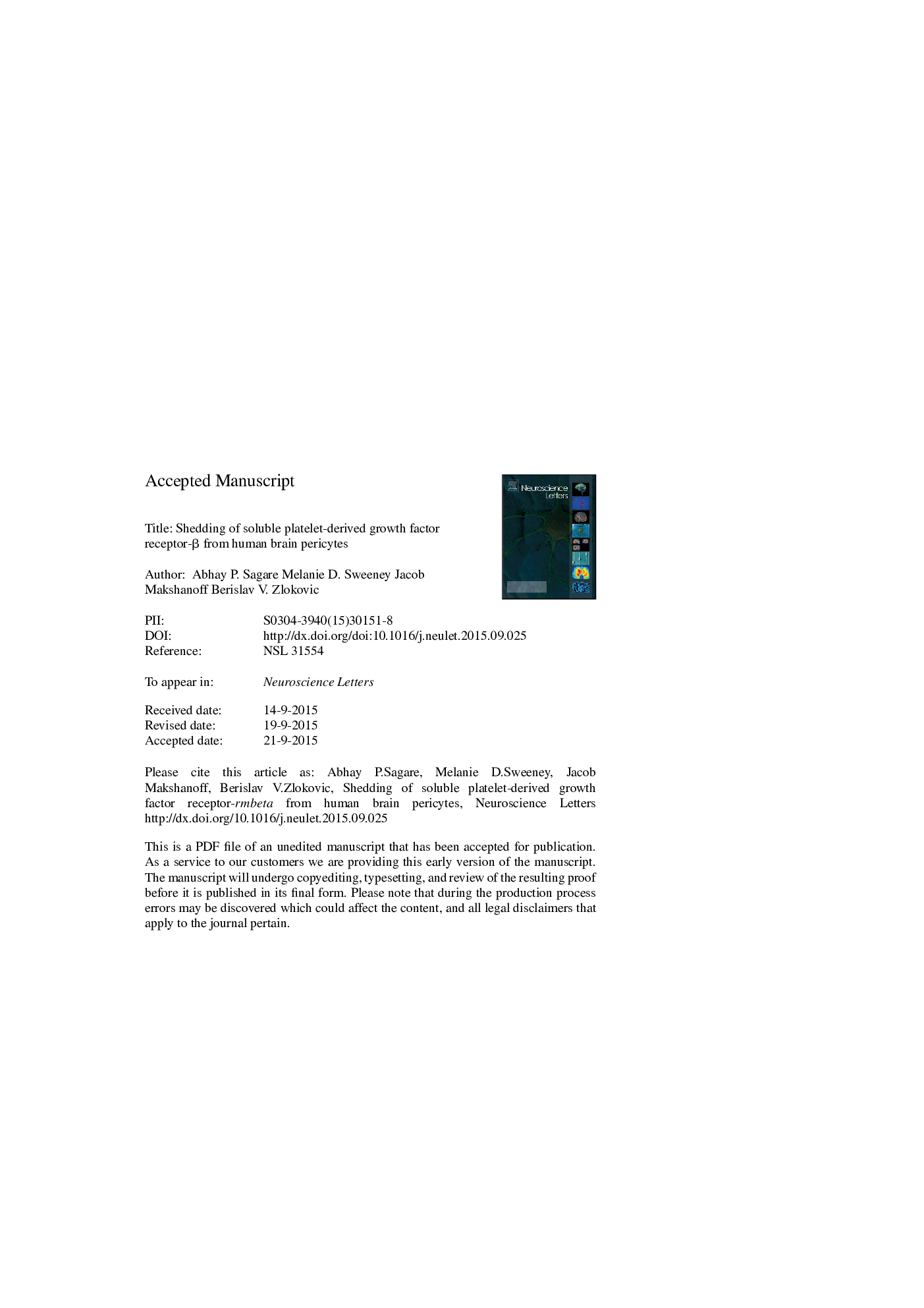| Article ID | Journal | Published Year | Pages | File Type |
|---|---|---|---|---|
| 6280609 | Neuroscience Letters | 2015 | 15 Pages |
Abstract
Platelet-derived growth factor receptor-β (PDGFRβ) is expressed in the brain by vascular mural cells-brain capillary pericytes and arterial vascular smooth muscle cells (VSMCs). Recent evidence shows that blood-brain barrier (BBB) disruption and increased permeability, especially in the hippocampus, positively correlates with elevated levels of soluble PDGFRβ (sPDGFRβ) in cerebrospinal fluid (CSF) in patients with mild dementia. To determine which vascular cell type(s) contributes to increased sPDGFRβ in CSF, we compared PDGFRβ expression and sPDGFRβ shedding in response to injury in early passage primary cultures of human brain pericytes, brain arterial VSMCs, and brain endothelial cells. PDGFRβ protein was undetectable in endothelial cells, but was found both in pericytes and VSMCs. PDGFRβ relative protein abundance was by 4.2-fold (p < 0.05) higher in pericytes compared to VSMCs. Hypoxia (1% O2) or amyloid-β peptide (25 μM) compared to normoxia (21% O2) both increased over 48 h shedding of sPDGFRβ and its levels in the culture medium from pericytes cultures, but not from VSMCs cultures, by 4.3-fold and 4.6-fold, respectively, compared to the basal sPDGFRβ levels in the medium (1.43 ± 0.15 ng/ml). This was associated with the corresponding loss of cell-associated PDGFRβ from pericytes and no change in cellular levels of PDGFRβ in VSMCs. Thus, sPDGFRβ is a biomarker of pericyte injury, and elevated sPDGFRβ levels in biofluids in patients with dementia and/or other neurodegenerative disorders likely reflects pericyte injury, which supports the potential for sPDGFRβ to be developed and validated as a biomarker of brain pericyte injury and BBB dysfunction.
Related Topics
Life Sciences
Neuroscience
Neuroscience (General)
Authors
Abhay P. Sagare, Melanie D. Sweeney, Jacob Makshanoff, Berislav V. Zlokovic,
